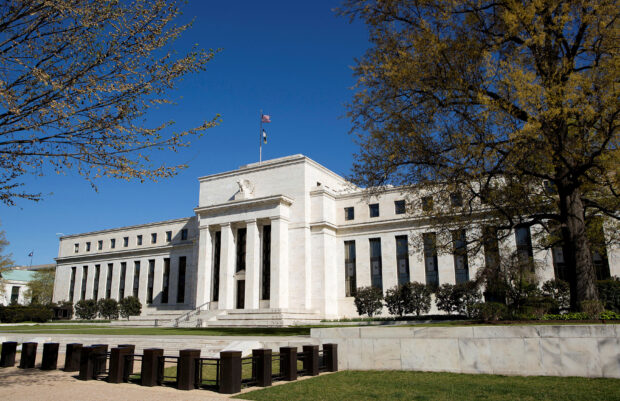Fed seen on hold until June, with rate-cut pace in focus

Ghe Federal Reserve Building stands in Washington April 3, 2012. REUTERS/Joshua Roberts/File photo
A second straight month of stronger-than-expected inflation has effectively shut the door on the possibility of a Federal Reserve interest-rate cut before June, and makes back-to-back reductions after that look increasingly less likely.
Gasoline and shelter prices drove the February consumer price index up 3.2 percent versus a year earlier, an acceleration from January’s 3.1 percent increase. Underlying core inflation, excluding gas and food prices, slowed less than economists had forecast, and on a three-month and six-month basis actually gained traction.
Those continued price pressures will not change what Fed policymakers do next week, when they are universally expected to leave the policy rate in the 5.25 percent-5.5 percent- range where it has been since last July.
But it means too little data might exist by their April 30-May 1 meeting to give them confidence that inflation is durably on a path toward the Fed’s 2- percent goal, analysts say. Even by June, there may be insufficient data to justify more than a couple of rate cuts all year.
READ: JPMorgan’s Dimon urges US Fed to wait past June before cutting rates
Tuesday’s inflation report “is an ugly read that will do nothing to sooth nerves” at the Fed, wrote BMO economist Scott Anderson. “Clearly, restrictive monetary policy has not yet fully done its work and a patient and slightly hawkish Fed must remain in place for the monetary medicine to fully take effect.”
Adding caution
Core services inflation excluding rents, a measure to which Fed Chair Jerome Powell has said he pays close attention, rose 0.5 percent in February from a month earlier, and over the past three months is up on an annualized basis by 6.8 percent , compared with the 6.7 percent pace in January.
Those sticky-hot readings will add to Fed caution on the inflation outlook, said Nationwide’s Kathy Bostjancic.
READ: Gasoline, shelter costs drive US February inflation higher
“While we thought a May cut was on the table, it is increasingly likely that the FOMC waits at least until June to start easing monetary policy,” she said, referring to the Fed’s policy-setting Federal Open Market Committee.
Policymakers will release fresh quarterly projections at next week’s meeting, and still-too-high inflation raises the possibility that those forecasts will signal just two quarter-point interest rate cuts this year, compared with the three seen in December.
Just two of the 19 Fed policymakers would need to shift their rate-path views to deliver such a change.
Fewer rate cuts in 2024
“Clearly the inflation data are running hotter than FOMC participants were generally thinking at the time of the December FOMC meeting,” wrote economists at LHMeyer.
Still, even if March projections show a majority of Fed policymakers see only two or fewer rate cuts this year, that “wouldn’t necessarily preclude a first cut in June,” they wrote.
Traders of futures contracts that settle to the Fed’s policy rate are pricing about a one-in-seven chance of a first rate cut in May, and a similar chance that the Fed will wait until July to reduce rates. They continue to see the main chance as June, pricing in about a 70% chance of a rate cut by then.
After the inflation data, traders pared their view of how much the Fed will cut rates by year-end, with pricing showing they see four quarter-point rate cuts in all as only a bit more likely than just three.